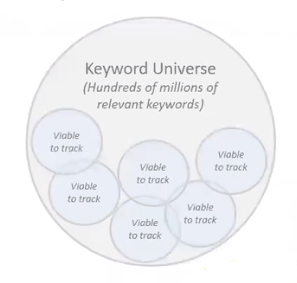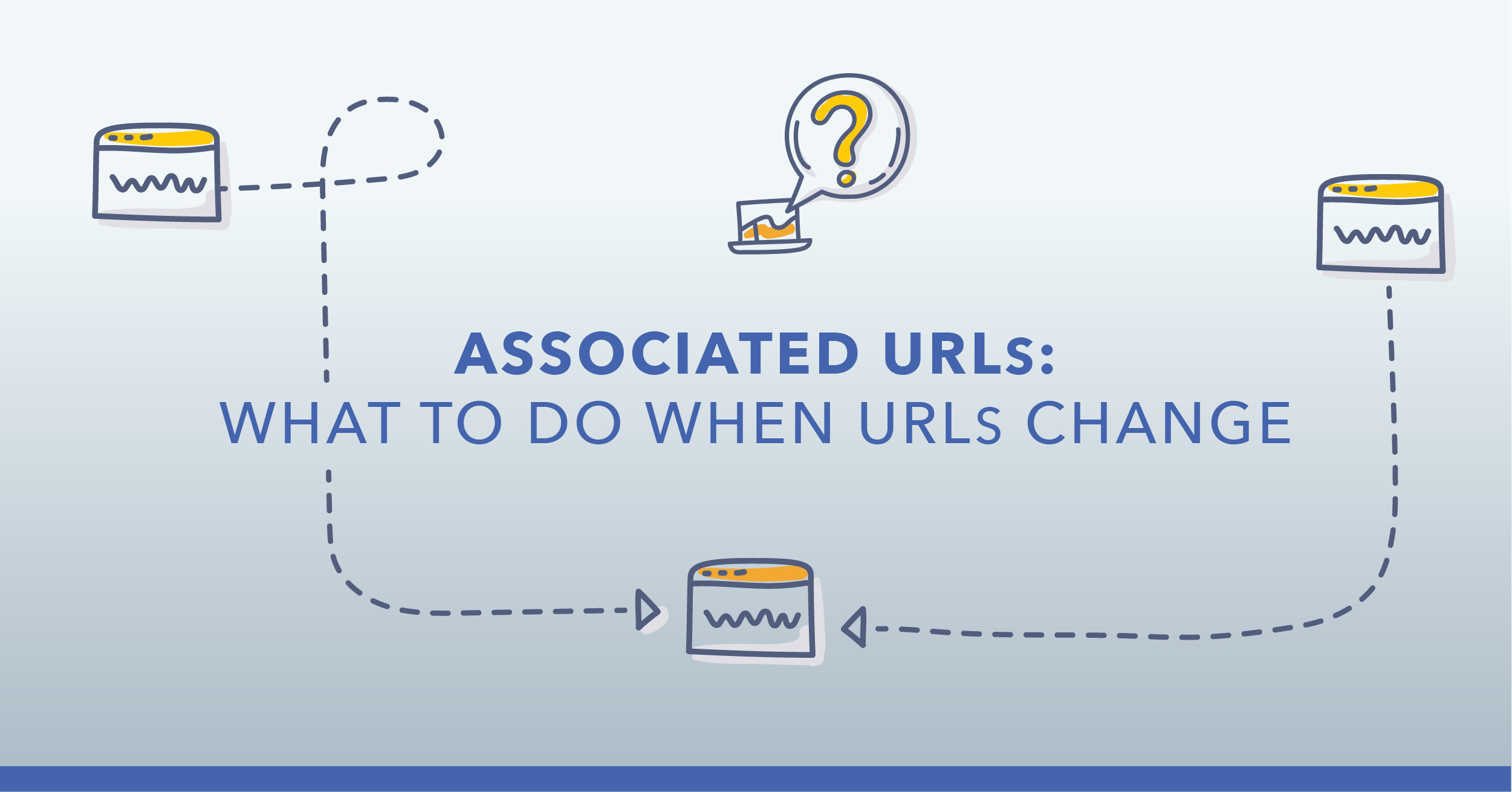Tracking keywords is a natural component of search engine optimization; after all, you want to analyze the progress of your organic performance over time. The trouble, however, comes in when you want to track a large set of keywords.
For SEOs who work at the enterprise level, this could mean millions of keywords.
The cost to track so many keywords is simply too great, so what options do you have? You want to be able to strategically expand the number of keywords that you track without having to pay exponentially. Most SEO platform contracts have a subscribed amount of keywords or search queries per domain and limitations to the ability to change the number of keywords tracked in your contract.
Keyword sampling shows you the performance of your entire site, and since most SEO solutions have no flexibility with the keyword count, statistical sampling is not a possibility.
So, how can you solve this challenge? That's what we're going to show you in this blog post.
The short answer is this: you need to look into statistical keyword sampling. This methodology allows you to track various sets of keywords without straining budget, and shows aggregate performance trends. We like to call it “tracking a million keywords without actually tracking them.”
What is Statistical Sampling?
Statistical sampling in SEO is a way to track a portion of your keywords and rotate them out over time to see how the individual keywords perform in aggregate.
If a keyword list were static and never changing, you would end up looking at incorrect data as things change over time (e.g. new products and services, keywords come and go, etc.). Where static keyword sets result in staleness, sampling allows for freshness.
The concept itself shouldn’t sound too foreign — even Google Analytics uses sampling to present data to its users.
Essentially, sampling allows you to measure different slices of the keyword universe on a periodic basis. You can determine if the results are generally similar, irrespective of the sample or not.
In order to first determine how many keywords you should track within your platform or rank tracker at all times, we recommend the following approach.
How Many Keywords Should I Track?
For many enterprise websites, they have visibility for millions of keywords across even more web pages, but as you know, it is not economical to track that full amount. It’s for this reason that we’ve created a simple formula to use for statistical sampling in SEO: the 15% rule.
This means that 15% of the total keywords that your website is visible for in Google should be tracked within your respective SEO platform. These keywords should be the most strategic to your SEO program, meaning they are or could be click-driving terms — they need to be tracked at all times.
This percentage, in most cases, catches the most strategic pages on a website and will fall under what matters most to an SEO.
Websites also tend to rank for many long-tail keywords with low search volume — keywords that aren’t essential to track daily. It is important, however, to monitor the performance of these keywords. Following the 15% method, and diversifying strategic and potential keywords allows you to understand your general performance in the SERPs.
As a website increases its visibility in Google as a result of increased authority and indexing, its keyword universe will continue to expand. Coupled with proper SEO reporting and analysis of that keyword growth, following the 15% rule of keyword tracking allows for the best economic and responsible approach to incremental budget increases.
Chris' Hot Tip:
Use the BOBs approach to create your keyword portfolio that is relevant to your business. The acronym stands for Benchmark, Optimize, Build, and Special projects. This approach will allow you to finalize your keyword portfolio, but keep in mind the static (important, non-changing) keywords versus those long-tail keywords which can be rotated.


The Importance of Statistical Sampling in SEO
Statistical sampling isn’t just beneficial if you need to track search visibility across millions of keywords. It's also useful for a single page template, and when individual search volume is low but those keywords are important when viewed in aggregate.
Example Industries
A real estate site, for example, can use statistical sampling to track search visibility for specific addresses — imagine how many tens of millions of addresses exist in the country with respective information online. This means there's an endless amount of ranking data for these sites, too.
Or, consider this application for a social media site that needs to track the search visibility of millions of accounts, and therefore millions of names.
An industrial B2B company can use statistical sampling to track different part numbers. Many other industry examples exist, especially for large enterprises.
Not limited to any particular industry, statistical sampling also plays a large role in A/B testing in SEO and multivariate testing. Testing at volume here can benefit from the statistical sampling methodology of managing keywords or pages.
How to Do Statistical Sampling in SEO
seoClarity offers our clients incredible flexibility in managing keyword portfolios. You can add or remove keywords as you please throughout your contract without penalty.
The most operationally competent companies never let non-benchmark keywords live in seoClarity beyond their welcome. Aggressively rotating keywords based on seasonality, testing, special projects, or algorithm updates is the ideal method for advancing the SEO program.
Recommended Reading: A 6-Step Approach to SEO Testing
How to Conduct Keyword Sampling in Five Steps:
1. Prepare a list of universal keywords in the Research Grid (or your respective SEO platform) and download the list.This is why Research Grid is so popular — it gives SEOs access to hundreds of millions of keywords' rank positions and other relevant metrics.
You can have free trial access to the Research Grid, with up to five free keyword queries per day right from the start, and 10 per day after a free registration.
2. Use simple random sampling to pick a sample size of keywords from the list.
To do this, upload the list into Excel and label the columns 1-33. Repeat this for your entire keyword list to have your keywords sorted into sets that reflect 3% of your total keywords.
Note: Make sure you have identified your bench-marked keywords that will always be tracked (i.e. those which are vital to your business).
3. Start to track these keywords in your keyword rank tracker, or the seoClarity platform.
4. After two weeks, remove all the data.
5. Repeat steps 2-5.
Because the keywords have been randomly sampled, this ensures that you’re looking at a different set of keywords but the overall trend shows how you’re performing across the entire universe of keywords.
When you follow these steps, you’re able to see the trend for many of your keywords without having to pay for them — a price that would be incredibly high on any rank tracking tool.
How Does seoClarity Help?
As you’ve seen, statistical sampling is extremely beneficial for creating an aggregate trend of keyword performance throughout the existing keyword universe. At seoClarity, we continue to build out that keyword universe so you can have access to the data points you need. Our Research Grid is the largest community-contributed keyword database in the world.
To ensure you use this database to its highest potential, we can set up automated keyword sampling to expedite the process and give you the insights you’re looking for. Daily keyword rank tracking also allows for continuous data, while annotations in our platform let you track when the keywords change.
seoClarity also gives you the ability to easily switch between keywords via UI and API. You have the ability to create custom segments by use of tags for micro- and macro-segmentation capabilities.
Additionally, you can create dynamic grouping based on keyword or page types. Dynamic filters accelerate the process of keyword selection because they allow for automated segmentation as data enters seoClarity (i.e. ranked pages).
We remove the guesswork out of the keyword selection process, and deliver the user with a simple analysis of big data.
Conclusion
An overview of keyword sampling is that it's an SEO strategy you can use to “track keywords without actually tracking them.” Use this simple methodology to save your budget and keep your keywords fresh. The SEO industry is everything but static, so your approaches need to be dynamic to keep up with the many industry changes.
When you change the keyword sets, you see new information for more of your keyword data set over time. Don't park your keywords and pay for non-relevance. Keep your keyword portfolio fresh by sticking to the 15% rule, utilizing the BOBs method, and using statistical sampling to streamline the process.







Comments
Currently, there are no comments. Be the first to post one!